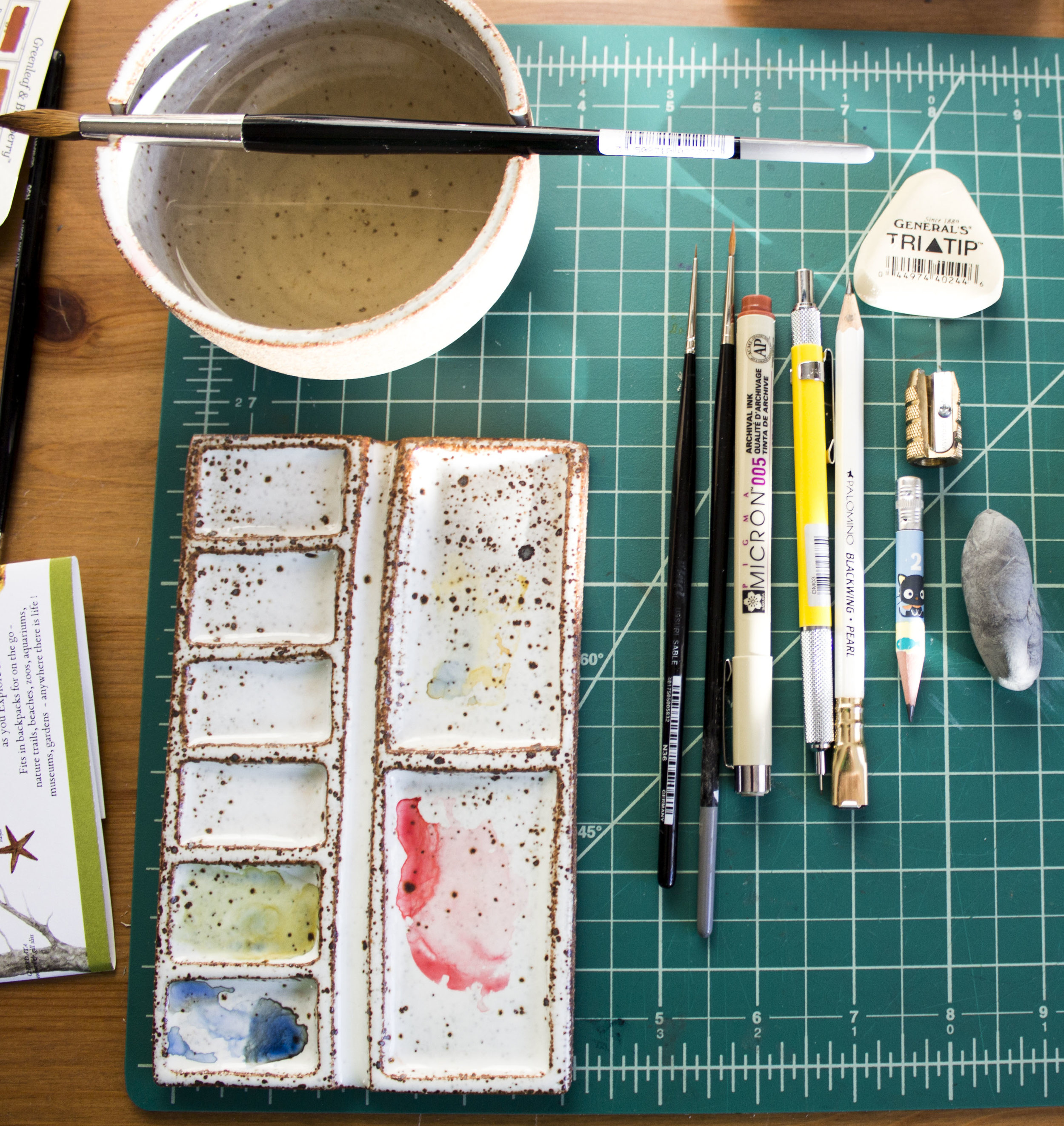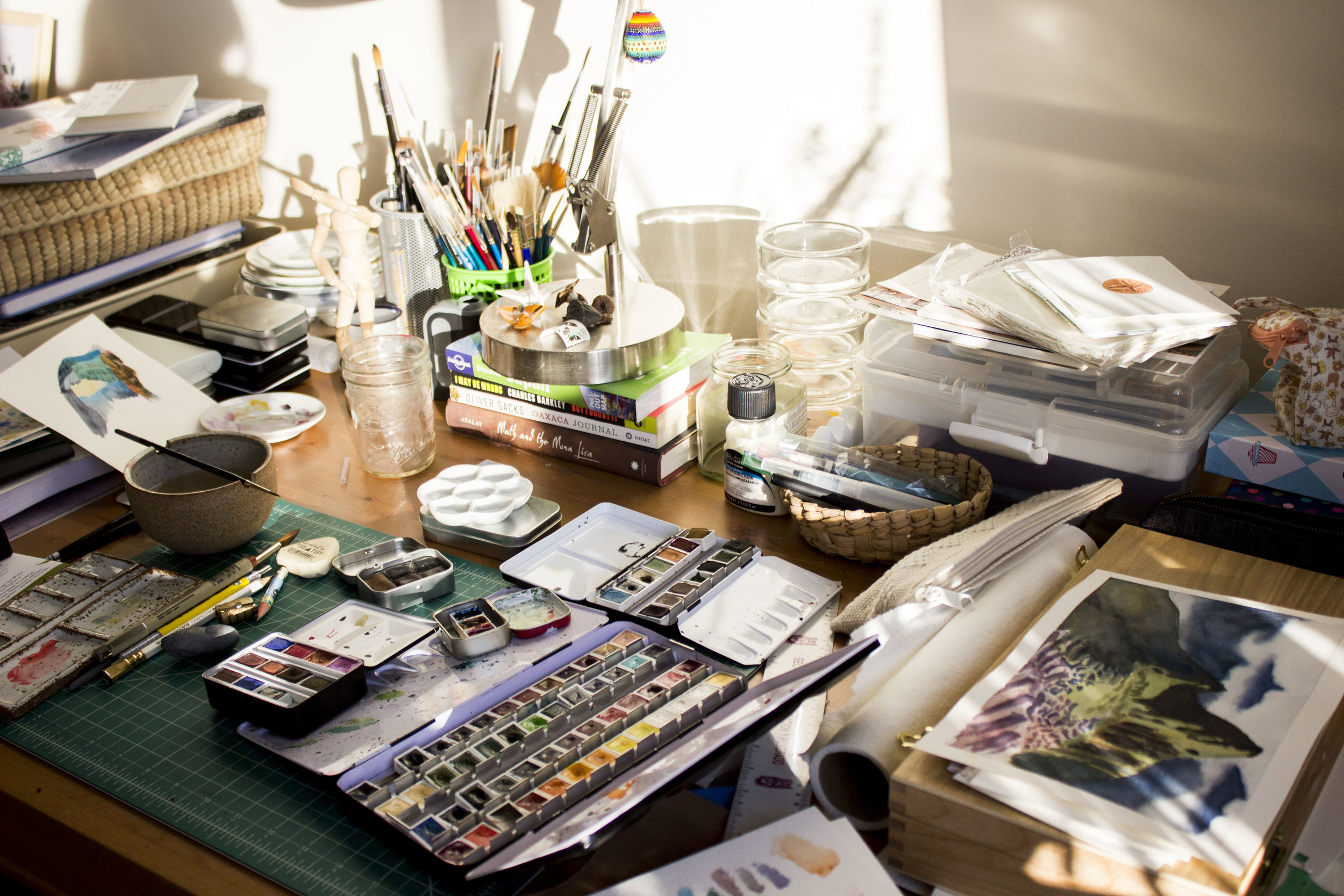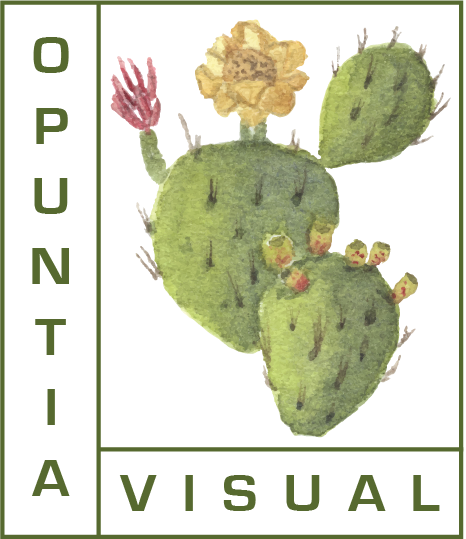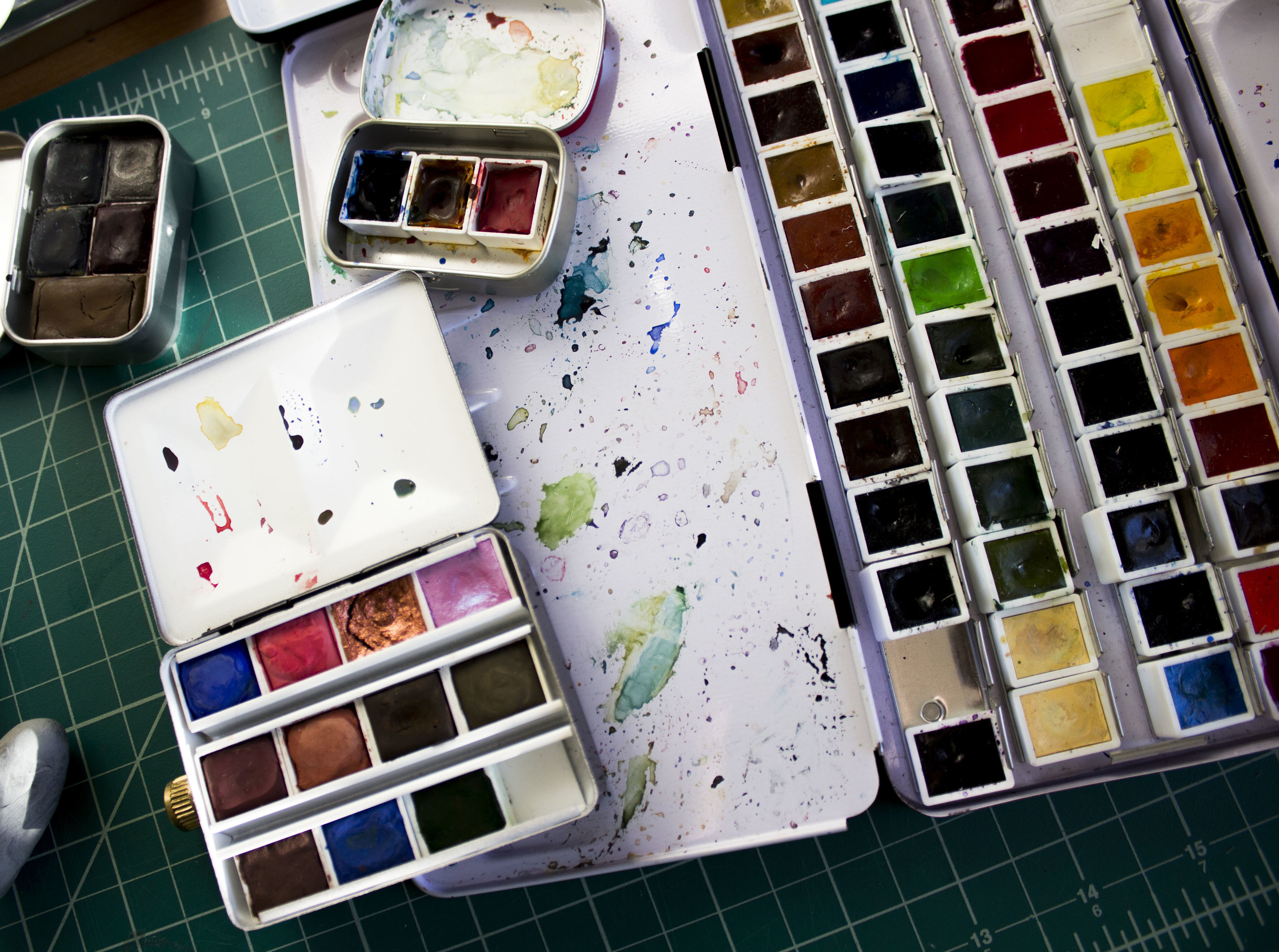This past week I had the chance of doing my first watercolor workshop. Although I have some experience teaching (undergrad science classes) I had never taught any watercolor painting topic before. The workshop ended up being a fantastic experience where everybody had a lot of fun (me included!) exploring the art of letting water flow in paper and letting go any fears of a blank page and not knowing the “right technique”.
Me with my successful students and their paintings!
When you have so much fun I think is inevitable not to try to share with everyone. So here I am sharing with what do you need if you want to get started : first thing is to get the right materials. If you ask me, yes expensive materials will work better than cheap ones. However, to paint well you don’t necessary need to get all the fancy gear at once.
The most important thing for you to succeed is definitely the paper. You could have the most expensive paint and brush but if your paper is not the right one you will be frustrated right away. In fact, you may even feel like watercolor isn’t for you! But once you have the right paper the paint just flows in the most beautiful way.
Despite I like some brands more than others, the most important thing is to make sure your paper is 100% cotton. Yes, they are different weights and the heavier the paper the less it will bend and it will absorb more water but, if they are 100% cotton you’re guaranteed with the best paper regardless of the weight of the paper. A standard weight to start would be a 300gms or 140lb paper. There are two kinds of paper cold and hot press. Briefly, the cold press will have a little bit of roughness to it, you’ll feel the texture while the hot press is completely smooth. It is up to you to choose whatever you feel more confortable with, but if you’re just getting started I would recommend the cold press. Here’s an image of the brands I’ve tried and have worked nicely: Arches, Stonehenge, Sennelier and Windsor and Newton. All the ones here are cold press 140lb just in different sizes.
Different brands of paper that works well with watercolor.
Once you have the right paper, the next thing to consider is the brush. Normally one would think of getting a more affordable full set of 4 to 5 brushes will be more helpful than just one. However, I’ve found with time that is better to spend more money on one good brush and it will be good for any kind of work. Although, there are many types of brushes I recommend a round brush. If you get a good kolinsky sable round brush, you’re all set! You can do thick strokes as well as tiny details with the point of the brush. If not, a squirrel brush will do the trick with much less investment.
Finally, but not less important is the paint. To get started I would recommend the Cotman series by Windsor and Newton, they are very affordable and colors are great. If you want invest more you can go for the professional one from the same brand but the cost scales up pretty quickly. To avoid high costs you can get only the primary set and mix from there. My favorite primaries are: French Ultramarine, Quinacridone gold and Scarlet Red. In addition, handmade watercolors are delightful specially for earth tones, Case for Making is a nice watercolor shop in San Francisco that sells great handmade watercolors including the cochineal carmin red (my favorite) as well as other materials necessary to paint.
There’s a lot of other little things you can add to your gear but the basics involve: an HB pencil, a kneaded eraser, a good sharpener, painter’s tape and a mixing tray,ceramic works better than plastic, if you don’t have one just get a plate from your kitchen ;) to start having fun with watercolors!
Normally I don’t do blog posts about watercolor itself but more informative/infographic type. If you like this post leave a comment! I can do a series of small lessons for you to get started to paint. Maybe you’ll end up doing your own scientific images by hand!







